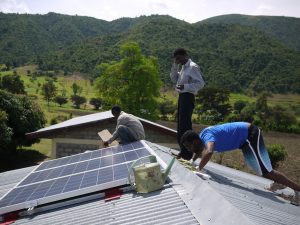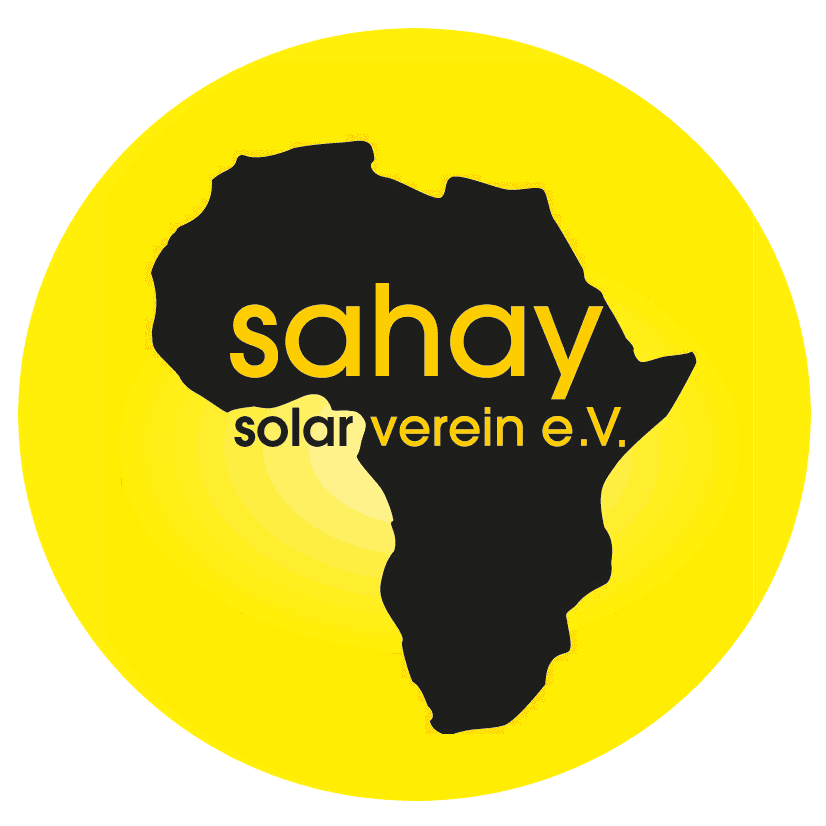Our Motivation
Only about 10% of the rural population in Ethiopia has access to electricity. Part of this electricity supply in rural Ethiopia is covered by the use of generators of various sizes. However, since fossil fuels such as diesel – if available at all – are also subject to strong price fluctuations and high inflation rates in Ethiopia, the continuous operation of these generators for families and social institutions often isn’t possible. Thus, countless facilities and families are left without light from as of the beginning of dawn at around 6 p.m. This not only makes general living conditions more difficult, it also, for example, prevents children from doing their homework after their daily work.
The members of the non-profit Sahay Solar Association have therefore been working since 2009 on the distribution of solar energy in Ethiopia, focusing in particular on off-grid applications for people who have no chance of accessing the national power grid. The Sahay Solar Initiative wants to actively participate in the distribution of solar energy and thereby create the greatest possible values on an ecological, economic and social level.

Solar power for a Rural Health Center
Our key-pillars
We are convinced that sustainable development can only happen if different aspects are considered and promoted to the same extent. In addition to direct aid, such as the construction of solar systems for social facilities, development can only be sustainable if knowledge about the technology is conveyed and, above all, there is a chance of new income opportunities. Our concept is therefore based on three main pillars:
Solar Training Social Projects Social Business
The aim here is to gradually develop self-supporting structures in the solar sector in Ethiopia through the theoretical and, above all, practical training of young Ethiopian specialists. As a result, as many young Ethiopians as possible can build up long-term income opportunities and independently offer their own solar solutions to society.
Institutional Anchoring – The responsible on site
Starting from various personal meetings with lecturers during travels in Ethiopia, we have been working closely with the Arba Minch University (AMU) in Arba Minch (Gamo Gofa Zone, Southern Ethiopia) since 2009. As a ‘starting signal’, a solar competence center was established within the university structures and since then, different universities in Germany and Switzerland have partnered with us in training activities as well as local project implementations.
The cooperation with the AMU represents the basis of our activities in Ethiopia and is a cooperation at eye level, in which the Sahay Solar Association sees itself merely as a catalyst or supporter of the goals and activities of the local university. In addition to trust and established relationships, this cooperation is also based on contractually regulated tasks and areas of responsibility.
Gamo Gofa Zone, Office of Chief Administration
The Office of Chief Administration, the local government of the Gamo Gofa Zone, manages the regional affairs of approximately 2 million inhabitants of the zone. A major challenge and a stated goal of the government is the development of rural areas at all levels.
Thus, on the initiative of the government, the cooperation with the Sahay Solar Association in the field of ‘rural electrification’ and, among other things, the project to equip 50 rural health centers with solar power was established.
The Office of Chief Administration not only takes over the organization and coordination with the health authority and the individual communities, but also makes a large financial contribution to the overall project with 30% of the project costs.
Arba Minch University (AMU)
The Arba The Arba Minch University is an established university in the city of Arba Minch in southern Ethiopia with a population of 300,000 people. With currently six faculties, it is one of the largest universities in the country. About 16,000 students in bachelor’s and master’s programs attend the AMU. The focus of teaching and research is on the water and engineering sciences.
The partnership with the Sahay Solar Association has existed since 2009. Since the beginning of our activities, the AMU has been a local partner for the installation of more than 20 solar projects of the Sahay Solar Association.
Four permanent solar specialists trained by Sahay Solar (“AMU Sahay
Solar Team”), financed from the local project budget, a pool of technicians as well as a constant stream of new student assistants, who take part in the faculty’s lectures as well as in the trainings at the Solar Competence Center, guarantee a regular and reliable maintenance of the plants.
A 10% contribution from the Arba Minch University to the project costs covers the costs for maintenance, internal staff and local transport.

 English
English Deutsch
Deutsch